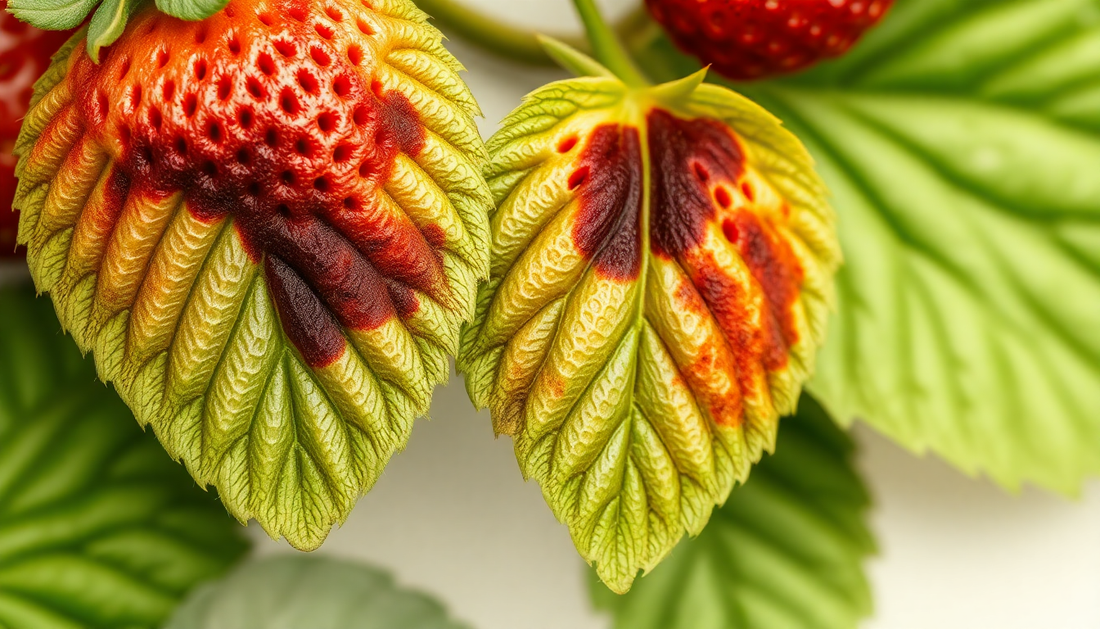
Why Are My Strawberry Leaves Turning Brown?
As a passionate gardener, there's nothing quite as frustrating as seeing your beloved strawberry plants struggling with discolored leaves. If you're finding that your strawberry leaves are turning brown, it's important to understand the potential causes and take the necessary steps to address the issue. In this comprehensive blog post, we'll explore the common reasons behind this problem and provide you with practical solutions to help your strawberry plants thrive.
Understanding Strawberry Leaf Discoloration
Strawberry plants are generally hardy and resilient, but they can sometimes face challenges that lead to leaf discoloration. The most common reasons for brown or discolored strawberry leaves include:
1. Nutrient Deficiencies
Strawberry plants require a delicate balance of essential nutrients to maintain healthy foliage. If your soil is lacking in key nutrients like nitrogen, phosphorus, or potassium, it can result in the leaves turning brown or developing other discoloration.
2. Pest Infestations
Pests such as spider mites, aphids, or thrips can wreak havoc on your strawberry plants, causing the leaves to turn brown or yellow as they feed on the plant's sap.
3. Disease Outbreaks
Certain fungal or bacterial diseases, like leaf scorch or leaf blight, can also lead to the browning or wilting of strawberry leaves.
4. Environmental Stress
Factors like excessive heat, drought, or cold temperatures can put stress on your strawberry plants, leading to leaf discoloration and other issues.
5. Mechanical Damage
Physical damage to the leaves, such as from hail, wind, or improper pruning, can also result in brown or damaged foliage.
Understanding the underlying cause of your strawberry leaf discoloration is the first step in addressing the problem effectively. Let's dive deeper into each of these potential issues and explore the best ways to remedy them.
Addressing Nutrient Deficiencies
If your strawberry leaves are turning brown due to nutrient deficiencies, the solution lies in providing your plants with the right balance of essential nutrients. Here's what you can do:
Perform a Soil Test
Begin by conducting a soil test to determine the nutrient levels in your garden. This will help you identify any deficiencies or imbalances that need to be addressed.
Apply a Balanced Fertilizer
Based on the results of your soil test, choose a balanced, slow-release fertilizer that is specifically formulated for strawberries. Follow the application instructions carefully to ensure your plants receive the right amount of nutrients.
Supplement with Foliar Sprays
In addition to a balanced fertilizer, you can also use foliar sprays to quickly deliver essential nutrients directly to the leaves. Look for products that contain a blend of macronutrients and micronutrients.
Improve Soil Organic Matter
Incorporating organic matter, such as compost or well-rotted manure, into your soil can help improve nutrient availability and overall soil health.
Managing Pest Infestations
If pests are the culprit behind your strawberry leaf discoloration, it's important to take swift action to eliminate the problem. Here are some effective strategies:
Identify the Pests
Carefully inspect your strawberry plants to determine the specific pests causing the damage. This will help you choose the most appropriate control methods.
Use Organic Pest Control Methods
Opt for natural, eco-friendly pest control solutions, such as insecticidal soaps, neem oil, or beneficial insects like ladybugs or lacewings.
Maintain Good Sanitation
Keep your garden clean and free of debris, which can harbor pests. Regularly remove any affected leaves or plants to prevent the spread of the infestation.
Encourage Natural Predators
Attract beneficial insects and birds to your garden, as they can help control the population of harmful pests.
Addressing Disease Outbreaks
If your strawberry leaves are turning brown due to a disease, it's crucial to identify the specific pathogen and take appropriate action. Here are some steps to consider:
Diagnose the Disease
Carefully examine the affected leaves and consult with a local extension agent or plant expert to determine the exact disease causing the problem.
Implement Disease-Resistant Varieties
When replanting, choose strawberry cultivars that are known to be resistant to the diseases prevalent in your area.
Practice Good Sanitation
Remove and dispose of any affected leaves or plants to prevent the spread of the disease. Disinfect your gardening tools regularly.
Use Fungicides Judiciously
If necessary, apply a targeted, organic fungicide to help control the disease outbreak. Follow the product instructions carefully.
Mitigating Environmental Stress
If environmental factors, such as extreme temperatures or drought, are causing your strawberry leaves to turn brown, here's what you can do:
Provide Adequate Moisture
Ensure your strawberry plants receive consistent, even moisture, especially during dry spells. Use mulch to help retain soil moisture.
Protect from Extreme Temperatures
Shade your plants from direct sunlight during the hottest parts of the day, and consider using row covers or cloches to protect them from frost or cold snaps.
Improve Soil Drainage
If your soil is prone to waterlogging, consider amending it with organic matter or creating raised beds to improve drainage.
Preventing Mechanical Damage
To avoid physical damage to your strawberry leaves, be mindful of the following:
Careful Pruning
When pruning your strawberry plants, use clean, sharp tools and make cuts carefully to minimize damage to the leaves and stems.
Protect from Hail or Wind
Install row covers or netting to shield your plants from hail, strong winds, or other environmental hazards.
Monitoring and Maintenance
Maintaining the health of your strawberry plants is an ongoing process. Be sure to regularly monitor your plants for any signs of discoloration or distress, and address issues promptly. With the right care and attention, you can keep your strawberry leaves vibrant and healthy, ensuring a bountiful harvest.
Remember, every garden is unique, and the specific solutions for your strawberry leaf discoloration may vary. Don't hesitate to consult with local experts or seek additional resources to find the best approach for your particular growing conditions. By understanding the potential causes and implementing the appropriate remedies, you can keep your strawberry plants thriving and enjoy the sweet rewards of your labor.







No comments